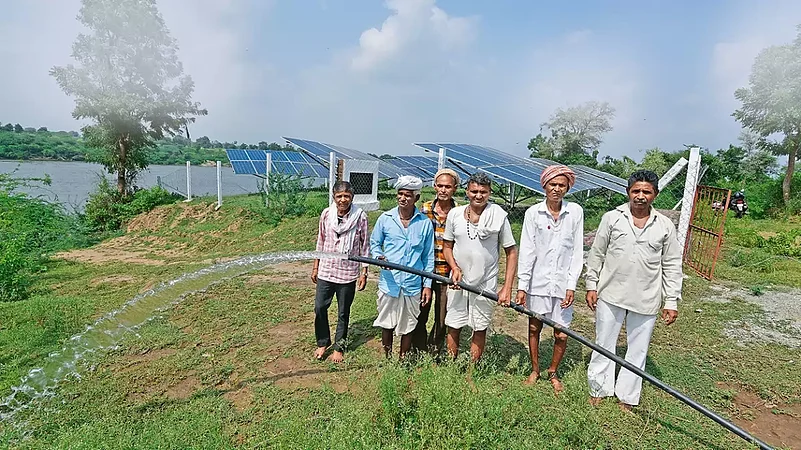Lalu Khachra, a sixty-year-old man, sits in his field under the scorching sun, with his friends, nibbling at the roasted corn from the cob he had picked from his field. He is a Bhil , an Adivasi group in the region. Like most fellow villagers, he is a full-time farmer sustaining himself solely through agriculture.
Lalu’s village, Sattu Ki Padar, lies on the periphery of Rajasthan’s district Banswara— nearly 500 km south of the capital city of Jaipur. The village houses several tribal communities, especially the Bhils. Farmers’ lives in tribal areas of Rajasthan are very grounded— they plough, they sow, they reap and they eat. There is not enough surplus of the produce for them to trade in the market. Mostly, their livelihoods are hand-to-mouth.
Advertisement
In villages like Sattu Ki Padar, the erratic geographical terrain and the scarcity of water bodies makes it difficult for farmers to irrigate their fields, a reason why their farming practices lie at the mercy of monsoon. Because of such natural constraints, the farmers there would only be able to grow Kharif crops like maize, paddy, and soyabean. A farmer from the village tells Outlook, Once the Kharif season gets over, there is little they can do for their livelihoods. A majority of them migrate to cities in Gujarat and Madhya Pradesh as daily labourers and come back only at the onset of the monsoons.
Advertisement
However, the government of Rajasthan has been taking steps to solve the problems. One such initiative is the Tribal Area Development-funded ‘Community Lift Irrigation System’. The project involves the installation of solar-powered lift-irrigation pumps that enable farmers to draw water from wells, ponds and nearby waterbodies and irrigate their fields. This enables farmers like Lalu to keep their fields irrigated through the year.
Since farmers are no longer at the mercy of monsoon rains, they have started cultivating crops through the year. The income levels of the tribal farmers of the village have grown and their trips to neighbouring states have also seen a sharp decline. “We don’t need to migrate to cities of Gujarat and Madhya Pradesh to seek livelihoods. It was difficult,” Chetan, another farmer from the village tells Outlook.
In Sattu ki Paddar, the solar-powered pump, according to TAD officials, has been functioning since 2017. “Earlier,” says Chetan, “we would irrigate our fields using diesel-powered pumps. Later electricity was used as the source of energy for the pump.”
“Diesel was too costly for us,” says Lalu, “and electric pumps not very reliable owing to the whimsical power supply and frequent power cuts. We were not able to irrigate the fields properly.”
Besides Banswara, Rajasthan’s TAD has installed pumps at several tribal junctions across the state, especially in the districts of Dungarpur, Pratapgarh, and Sirohi, said an official. “These pumps have reduced the cost of our farming, and have ameliorated the irrigation in our fields,” says Narayan, a 42-year-old villager.
Advertisement
Farmers in Banswara are doing better than before but they are fraught with certain woes. “Our crop is damaged by stray pigs who regularly come at night. We urge the government of Rajasthan to help us with the basic fencing of the fields,” says Lalu.
(This appeared in the print edition as "Making It Rain")




















